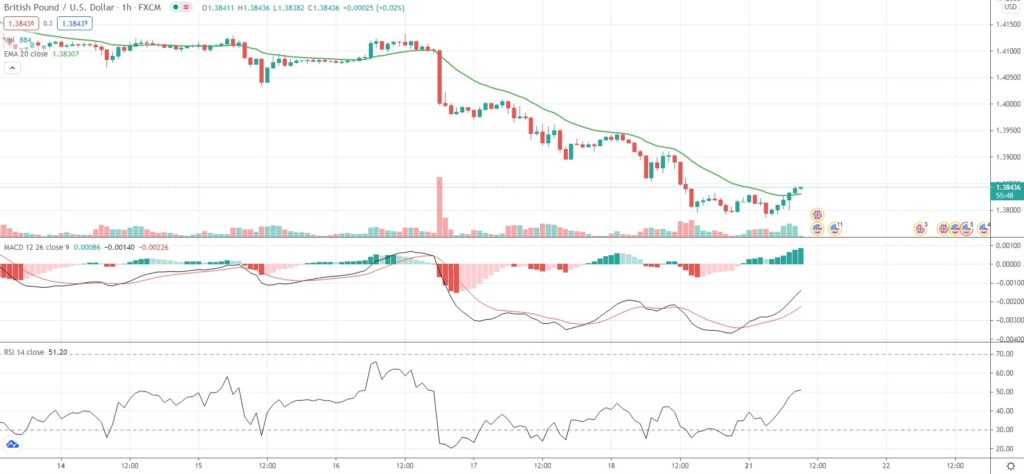GBP/USD rebounded from an over nine-week low on Monday, with market focus now turning to a testimony by Fed Chair Jerome Powell on pandemic emergency lending before the Select Subcommittee on the Coronavirus Crisis on Tuesday and to June’s policy decision from the Bank of England on Thursday.
BoE policymakers look set to remain divided over the bank’s GBP 875 billion government bond-purchasing programme, after consumer inflation in the UK rose to nearly two-year highs. In May, BoE chief economist Andy Haldane was the only one to vote in favor of halting the bank’s quantitative easing in August once bond purchases reached GBP 825 billion and experts believe that he will probably maintain such a stance at the upcoming policy meeting.
Meanwhile, after recording its largest weekly gain since March 2020 against a basket of six major peers, the US Dollar gave up a portion of those gains on Monday. The Dollar Index was 0.15% weaker at 92.187, after rising as high as 92.405 on Friday, or its strongest level since April 9th, supported by a surprise hawkish turn in Federal Reserve’s policy outlook.
The Fed signaled a sooner-than-anticipated end to its ultra-accommodative monetary policy, which pressured riskier assets and bolstered the US Dollar.
“The Fed’s hawkish policy shift has brought an abrupt end to the recent period of low volatility and narrow trading ranges for G10 FX,” currency analysts at MUFG wrote in an investor note.
“The Fed has encouraged market participants to price in more rate hikes into next year lifting US short rates and the USD.”
Still, according to Westpac analysts, while the DXY has room to test March highs following its recent sharp gains, “there’s not enough juice for a sustained medium-term breakout beyond that.”
The yield on benchmark 10-year US government bonds dropped to 1.4110% earlier on Monday, or a level not seen since early March. At the same time, the yield on 30-year US bonds fell below 2% for the first time in more than four months.
As of 9:01 GMT on Monday GBP/USD was edging up 0.31% to trade at 1.3840, after earlier touching an intraday low of 1.3786, or its weakest level since April 16th (1.3716). The major currency pair has retreated 2.58% so far in June, following a 2.82% gain in May.
Bond Yield Spread
The spread between 2-year US and 2-year UK bond yields, which reflects the flow of funds in a short term, equaled 10.73 basis points (0.1073%) as of 8:15 GMT on Monday, down from 13.2 basis points on June 18th.
Daily Pivot Levels (traditional method of calculation)
Central Pivot – 1.3845
R1 – 1.3898
R2 – 1.3998
R3 – 1.4051
R4 – 1.4104
S1 – 1.3745
S2 – 1.3692
S3 – 1.3592
S4 – 1.3493






